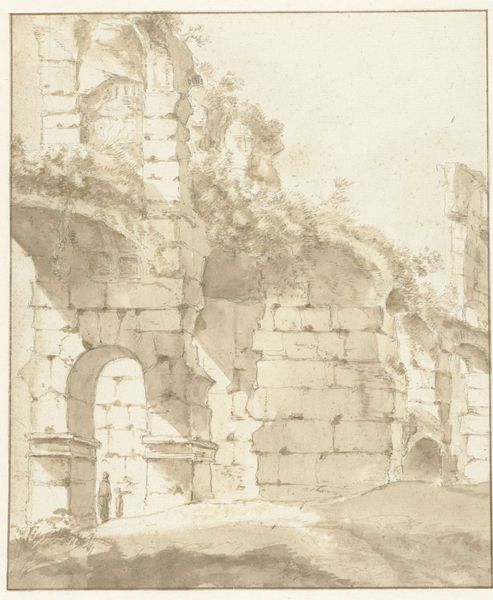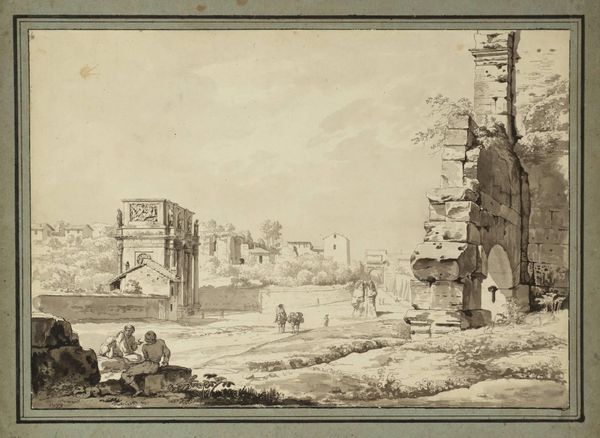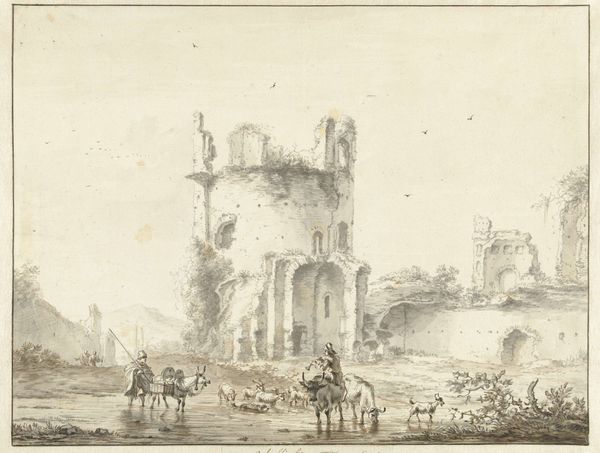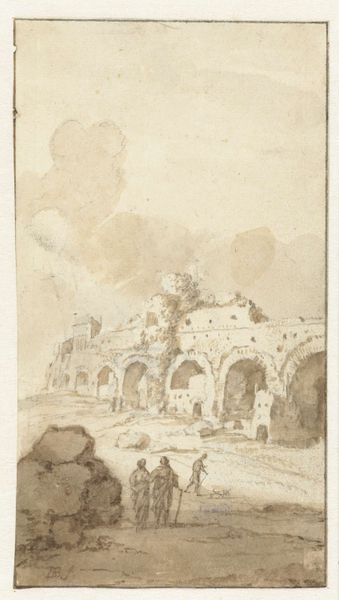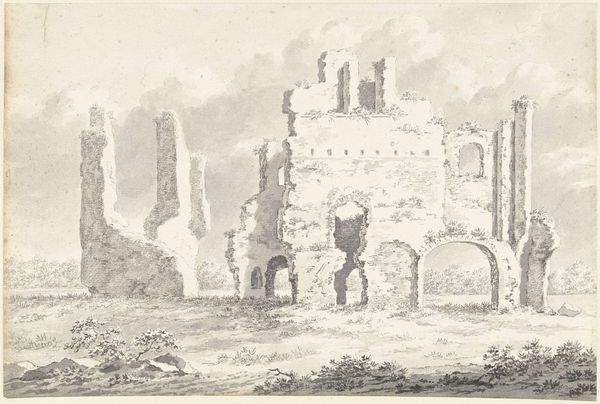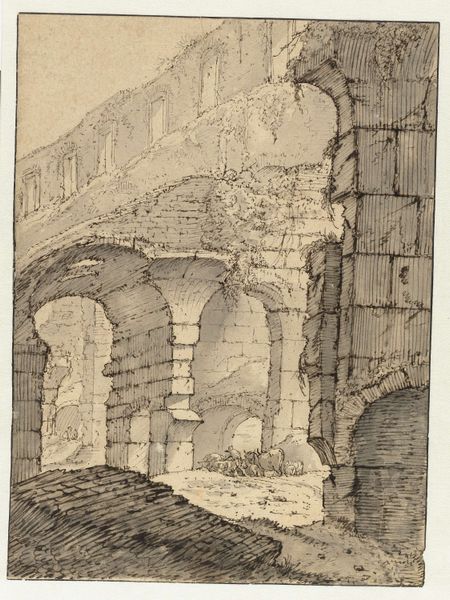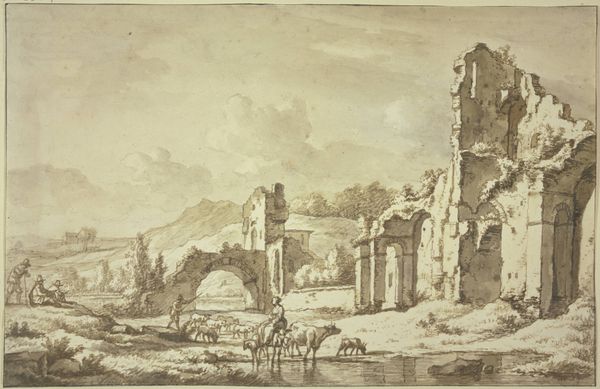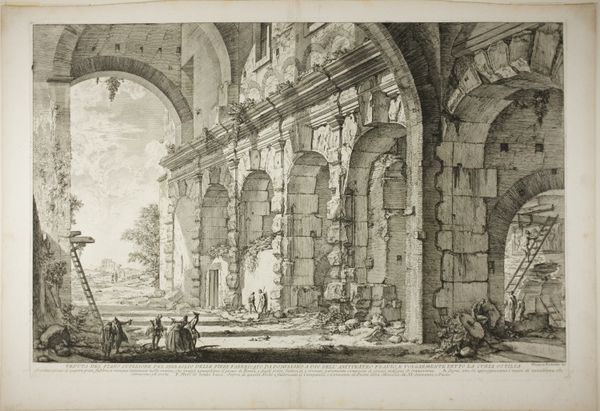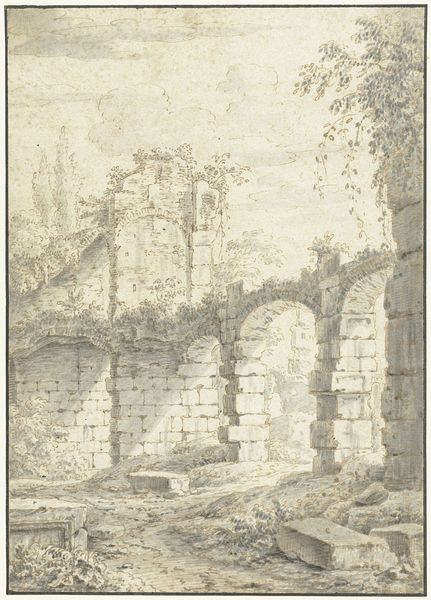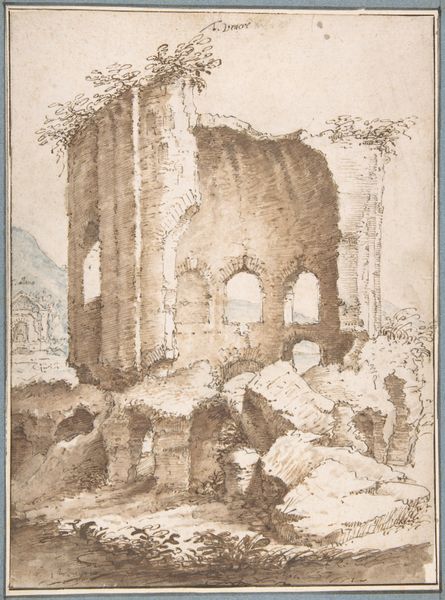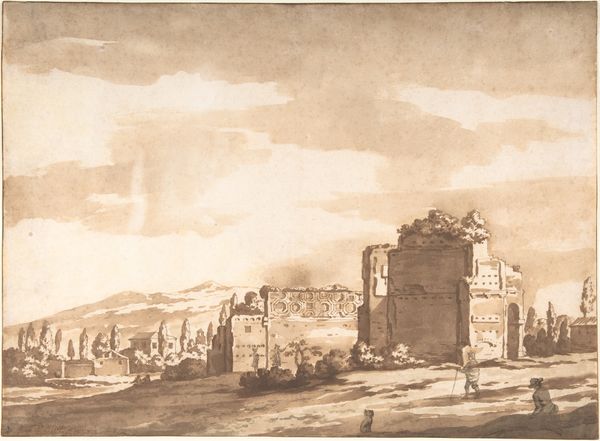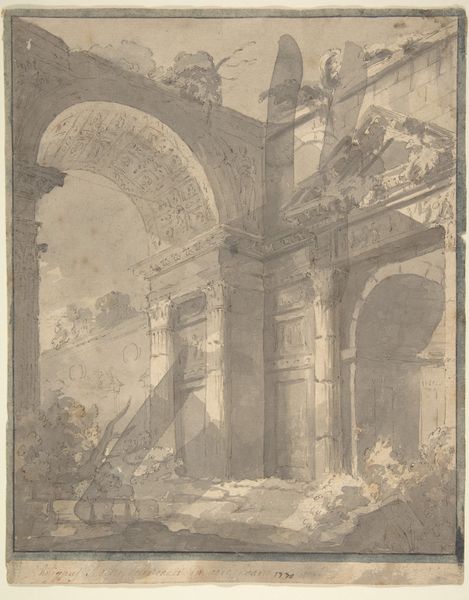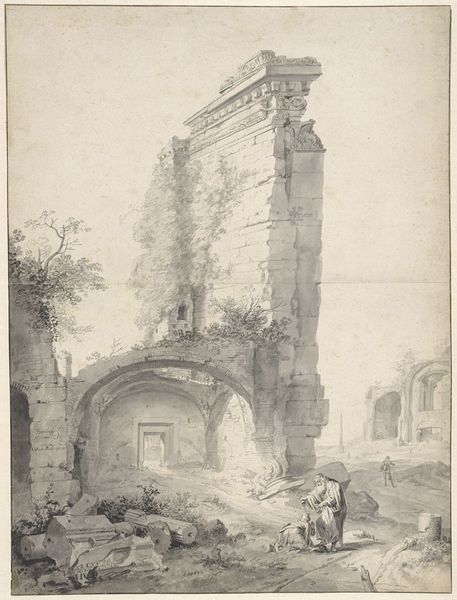
drawing, paper, ink
#
drawing
#
baroque
#
landscape
#
charcoal drawing
#
paper
#
ink
#
cityscape
#
history-painting
#
historical font
Dimensions: height 277 mm, width 237 mm
Copyright: Rijks Museum: Open Domain
Editor: Here we have Jan Asselijn's "Gedeelte van het Colosseum met een ezeldrijver," a drawing in ink and charcoal from around 1635-1646. It’s striking how small the human figures seem against the ruinous architecture. What story do you think this piece is trying to tell? Curator: It's less about telling a specific story and more about juxtaposing the grandeur of a decaying empire with the everyday lives of those who now inhabit its remnants. Look at how Asselijn positions the Colosseum not just as a monument, but as a backdrop against which labour continues. What does that contrast signify to you? Editor: Maybe that history is always present, but life persists? It feels almost like a critique of the Roman Empire, showing its eventual collapse and the quiet continuation of life regardless. Curator: Exactly. Consider the power dynamics at play here. The Colosseum, once a symbol of imperial dominance and brutal entertainment, is now mere architecture, overshadowed by the presence of the working class. Asselijn uses the figures almost as witnesses. What do you make of their quiet observance? Editor: It seems… sobering. The weight of history, maybe, on those who were once subjects, but now navigate the space as equals, or at least in a different power dynamic. Curator: And what does it say about the narratives we build around power and empire when those symbols ultimately crumble, becoming part of a landscape shaped by those who were once excluded? It compels us to confront how history remembers some and forgets others. Editor: That’s a powerful idea. I never considered the work in light of the continuing economic conditions. Thank you for the additional historical perspective! Curator: Absolutely, considering those undercurrents transforms our understanding, doesn't it? It allows us to see the work not just as a depiction of the past, but as a commentary on power, legacy, and the ever-shifting landscape of human experience.
Comments
No comments
Be the first to comment and join the conversation on the ultimate creative platform.
